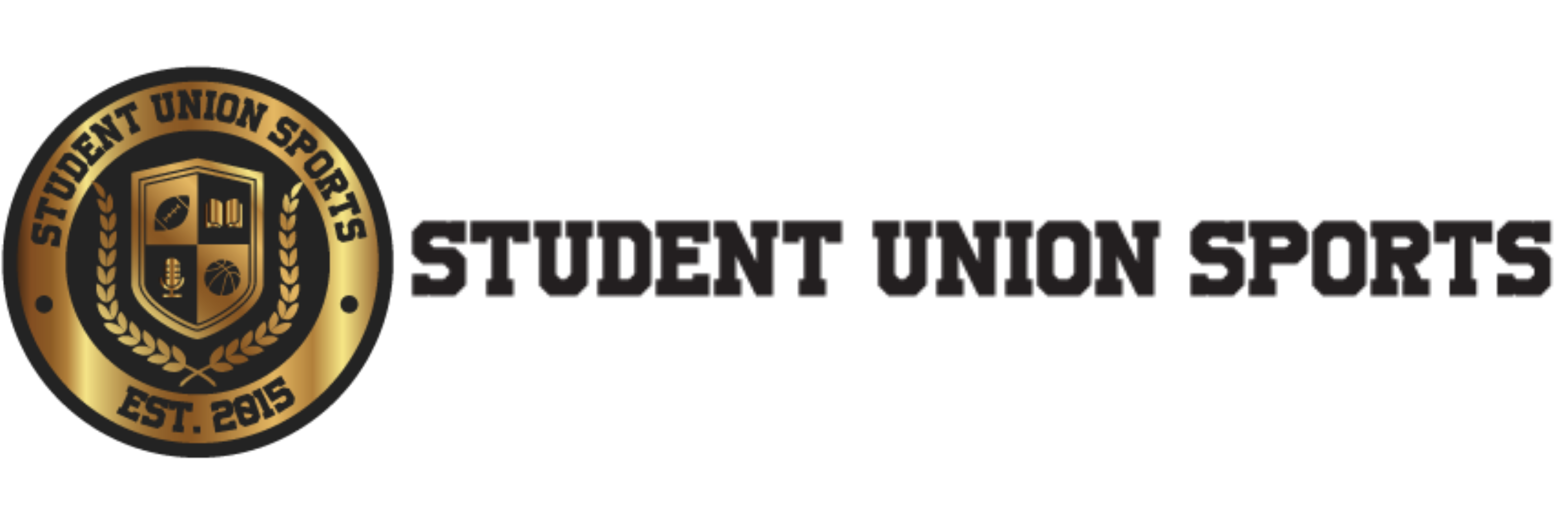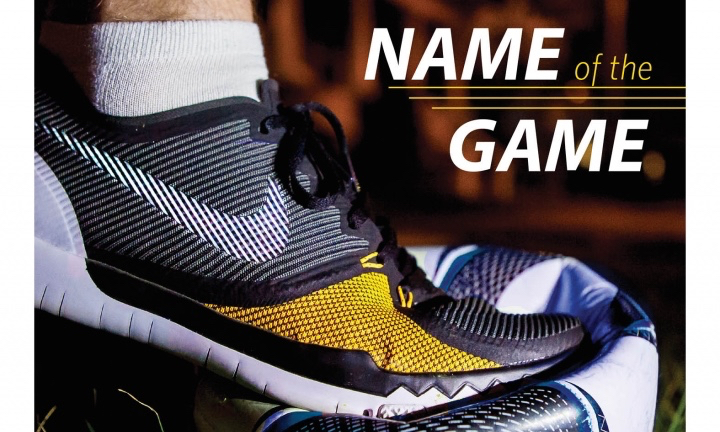This article was originally written by Allana Akhtar and appeared in The Michigan Daily on September 22, 2015. It has been republished with the author’s permission.
The return of the “swoosh” to the Michigan Athletics apparel is emblematic of much more than a shiny new contract, but of a revitalized fan base and newly energized student athletes. But still, according to students, athletes and alumni, regardless of the changing dynamics between apparel contracts and the school, the block M will always belong to fans of Michigan football.
Following the end of the athletic department’s apparel contract with Adidas, Interim Athletic Director Jim Hackett announced a new partnership with Nike. The deal, which will run through 2027, made history as the largest such contract in the history of college football at $169 million over 15 years. By comparison, the second largest apparel contract, between Notre Dame and Under Armour, totals $90 million over 10 years.
“The University of Michigan ranks high among the world’s great institutions of higher learning and enjoys a rich, tradition-laden history in college sports,” said Joaquin Hidalgo, vice president and general manager at Nike North America, in a press release. “We eagerly look forward to bringing out the best in each other.”
The deal states the University is to receive $76.8 million in cash alone, $12 million as a “signing bonus” and $80.2 million in apparel. The deal will cover all 31 varsity sports and includes guaranteed internships for qualified students and research collaborations for future products.
Additionally, the University will have the first football team to wear Michael Jordan’s esteemed apparel, previously only available to basketball teams.
This isn’t the first time the University made history with a Nike contract — the University first signed an endorsement contract with Nike in 1994 for $7 million over seven years. Joe Roberson, athletic director at the time of the deal, said it was “the largest such deal in the history of collegiate sports.”
Nike gave the University $1 million per year in shoes and apparel and $75,000 in cash payments to the athletic program in the earlier deal, Sports Business Daily reported at the time. The company also provided two scholarships in women’s athletics, funded a yearlong fellowship in sports journalism and paid $45,000 into scholarships.
The University stayed with Nike for 13 years until signing a contract with Adidas in 2007.
This first Nike deal was among the first between apparel brands and universities. Prior to wearing Nike brand apparel, athletes wore different brands depending on the sport. With this deal, all 25 athletic teams at the time wore the same “swoosh” on their jerseys.
Today, however, this kind of apparel contract is standard practice for non-profit organizations such as the University, Marketing Prof. Puneet Manchanda said. Though the University is taking the cash, Nike can gain immense visibility through TV and media surrounding athletics.
“For these kinds of contracts, it is essentially a marketing investment,” Munchanda said. “The idea is you sponsor a team and the publicity of the event and the interest of the audience will expose your brand. In the long run you will build a relationship with the consumer, the brand and the event you are sponsoring.”
However, a deal of this magnitude does not come without sizable risks. For the University, the risk resides in Nike’s corporate image. Michael Jensen, associate professor of strategy at the Business School, said in the event of a Nike scandal, such as employing unfair labor practices, the contract’s popularity among the University’s fan base could diminish, ultimately diminishing it’s value.
“The big risk for the University of Michigan is if it suddenly revealed that Nike is a company with a lot of problematic business practices,” he said.
Ethical corporate behavior came into question with the University’s previous athletic contract with Adidas. In 2012, students held a protest urging the University cut ties with Adidas, alleging the company did not compensate workers in their Indonesian factory. Specifically, students claimed Adidas violated their contract with the University, which required workers be compensated for the apparel.
Students were not the only ones to express concern for Adidas’ company practices. University President Emerita Mary Sue Coleman wrote two company executives in September 2012 requesting they provide assistance and reparations to the terminated factory employees in a letter.
“I hope that Adidas will fully appreciate the importance the University places on ensuring that the workers who have been involved in manufacturing license products receive the assistance they require and have earned,” Coleman wrote in the letter.
In April 2013, Adidas stated it would pay severance to the fired workers. The severance was given in addition to $525,000 the company already had given them for aid and organized job placement programs and food vouchers.
“We are committed to long-term solutions and wanted to resolve this matter so we could ensure the focus moves to sustainable solutions for the future,” Katja Schreiber, Adidas Group spokesperson at the time, wrote in an e-mail to The Michigan Daily. “This additional assistance will provide additional relief to workers and their families still impacted from the unethical factory closure.”
However, the company was in some ways too late — at the time of this decision, 17 colleges terminated their contracts with Adidas in the wake of country-wide student protests. Though he made no reference to this, Hackett’s decision against Adidas could have been impacted by the lasting impact of the company’s actions.
Nike’s reputation is not the only one on the line with this contract. For the value of the contract to be upheld, the University needs to show success on the field.
“(The football team is) the biggest risk for Nike,” Jensen said. “If the University football team continues to do poorly and therefore not give the expected value of TV appearances.”
Despite the contract’s immense monetary value, the decision to sign with Nike was not about the money, Hackett said in a July interview with the Michigan Daily. Because Nike, Adidas and Under Armour were all vying for the athletic department’s apparel, Hackett’s decision went beyond finances.
“I was looking for the future,” Hackett said. “It didn’t matter that Nike was really successful here in the past, it didn’t matter that Under Armour had invented a wicking system no one else had, it didn’t matter that Adidas had this global dominance, we’re signing a new 15-year deal.”
According to Hackett, the decision included looking at not only market research and performance evaluations, but also feedback from fans, players and alumni on each of the three companies.
LSA senior Dominic Jamett, president of the Student Athlete Advisory Council, said the administration reached out to him and other student-athletes for feedback on the apparel companies.
He said he appreciates the way the athletic department is receptive to input from student-athletes.
“We are pretty lucky that we have an athletic department that cares so much about our opportunities,” Jamett said. “The gear that we get provided is second to none and students recognize that, and we definitely do not take that for granted.”
Student athletes are not the only ones pleased with the athletic department’s decision. Though the athletic department did not reach out to the Alumni Association in a similar way, Dave Schueler, vice president of alumni engagement at the Alumni Association, said he noticed positive reaction among alums across their social media platforms.
“Sometimes just something new is exciting in general, I think people rallied around having something new or different to talk about,” he said.
Schueler speculates the deal brought back memories from when the University previously signed with Nike, as the company worked with beloved Michigan football coach Lloyd Carr. Because the University signed with Nike for a longer period of time than with Adidas, he says more alumni felt connected to the “swoosh.”
With the recent hiring of Jim Harbaugh and contract deal with Nike, alumni can’t help but feel hopeful for the next chapter in University athletic history, Schueler said.
“All of the things that are new are exciting and, perhaps, some of the new things remind us of the success that the athletic program, specifically football, had in years past,” he said.
For Jamett, however, the gear does not make or break wins. He said not only are student-athletes unphased by the size of the deal, fans will not be impacted by the Nike deal because they came out for the student-athletes — not the jerseys.
“I do not think the brand of gear is the biggest thing right now,” he said. “At the end of the day, it is going to have the block M and I think that is what people love.”






